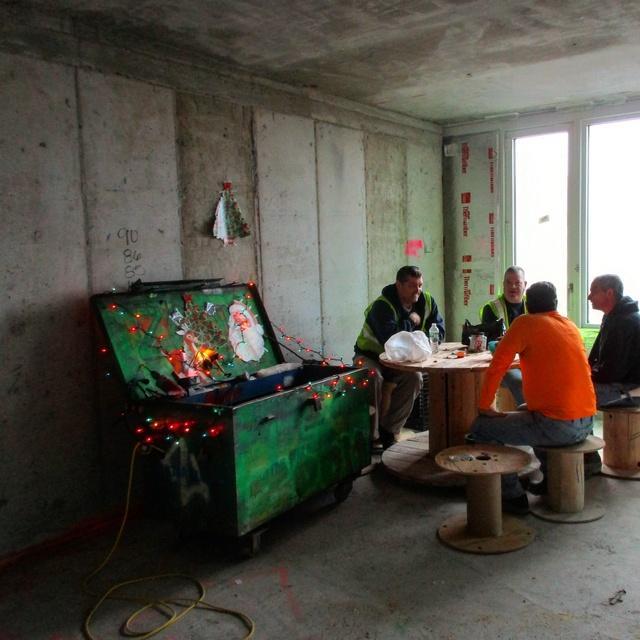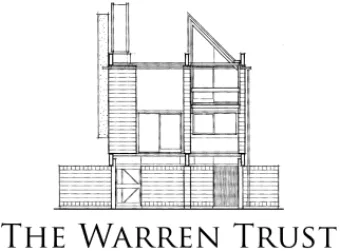Metalcraft Writing Award 2016 Short Writing Pieces
17 Jun 2016The A+W•NZ Metalcraft Writing Award 2016 called for short-piece writing (300 words) on any topic relevant to A+W•NZ's two central aims: visibility and inclusive.
The winner and Highly Commended have already been announced and posted, and the jury of Dr Julia Gatley, Marianne Riley and Frances Charles deemed that the general standard of the submissions was very high, and recommended publishing more of them. Here are three more of the submissions, by Sophie Hamer, Carolyn Hill and Ashleigh Low. Keep an eye on the Articles Page for more in the upcoming months.
The A+W NZ Metalcraft Writing Award 2016 was established and organised by Megan Rule.
All images supplied by the authors.(Main image supplied by Ashleigh Low)
"Growing into it (or out of it)" - Sophie Hamer

‘Oh, you’ll grow into it,’ they say, as if there is nothing to do but eat and wait, letting project timelines and office hours hum around us. Certainly, we are young, but these seemingly innocuous words assert an ill-fit, as if we aren’t wearing our roles well, as if five years of study didn’t teach us how to walk in these shoes.
Each day architectural graduates try on the profession for size, assessing how it looks on us from different angles. We examine our current fit, noting those who wear it better, those whose shoulders it seems to have been made for. In their eyes we trace tales of sympathy, irritation or memory, and we see what they see: a bit too long here, overly baggy there, the increasing self-awareness and lack of confidence of the swamped wearer. Then we try to stand a little taller against the measuring tape of architectural success.
Why are we obsessed with this idea of fitting? Is it a kind of reincarnation of the body image issues we sifted through as teenagers? The assumption that periods of great change, and great learning, must remove us of our identity, render us invaluable? In the slow motions of the everyday professional setting, our age situates us against and alongside others, apart from our past and future selves. To have to wait to grow into it can be severely disparaging at worst. At best, it is an example of fine planning: the considered knowledge that time will pass and things will change, so beyond patience, you must do all you can with what you have now.
Like gender, age is constantly negotiated. Can we assume an age by putting on a different jacket, taking up a position, stating our own terms of entry? Young architects like Assemble, winners of the Turner Prize, strip off, put the clothes of the profession to one side. Rather than grow into it, they say, let’s grow out of it: cast aside the assumptions. Waiting to fit is constricting, especially once you get there. Maybe leadership doesn’t have to be about wearing the pants. The real leaders are the ones redesigning the outfit; wearing it like nobody before.
"CONSERVATION OF HISTORIC PLACES – A TAONGA APPROACH" - Carolyn Hill

Contemporary international discussion regarding conservation of humanity’s cultural heritage has increasingly recognised the need for understanding historic places as cultural landscapes, highlighting the importance of multivocality and a sense of ownership at a local level to best protect places. However in practice, concepts of cultural landscapes are often avoided due to renewed debate around ‘authenticity’ and practical management difficulties. This continued disjunct between theory and practice can potentially perpetuate issues of alienation and silencing of the very communities to whom a historic place has value.
The conservator Dean Sully and others have drawn parallels between the New Zealand Maori concept of taonga and historic place conservation, suggesting that conservation of heritage as taonga is critical to preservation and transmission of cultural knowledge, preserving not just a physical object but oral and physical stories and skills. A taonga understanding of historic places has powerful potential to intrinsically contextualise architectural teaching and practice in Aotearoa, by embedding it in our whenua and broader Polynesian ancestry. In this context, architecture can be treasured for its continued use, community connections, and evolving values, which are not prescribed by ‘experts’ but are inherent to a historic place. It also becomes grounded in a cultural landscape that considers not only tangible structures from a particular period but allows fluidity between natural and cultural realities, interwoven with stories and performances that enliven and give them meaning.
Learning about, and responding to, historic places in this way presents the opportunity for architecture to more fully recognise human rights, by prioritising the sustainment of community life and spirit, and by truly embedding a place in its place.
READING LIST
Avrami, E. (2000). Values and heritage conservation. Conservation, 15(2), 19-21.
Aygen, Z. (2013). International heritage and historic building conservation: Saving the world's past. New York: Routledge.
"The Demographics of Architecture. Life Lessons from the architect to the rebar-cage worker." - Ashleigh Low

I stood at the edge of the concrete slab on floor 11. It was 26 fahrenheit and the West wind was ripping water from my eyes. The noise of the bolt drills hammered my ears. I gripped my icicled fingers around my pen and tried to scribble down some notes. But the ink was frozen. I sighed a stream of smoke and glanced up from my wad of drawings. Two lines of men standing opposite each other, were billowing out a tune at the top of their lungs. In full harmony a cloud of human breath hovered over their steel creation. I was mesmerised by their spirits in the cold as they worked with great speed, weaving the wire around the rebar and twisting it in place.
“We’ll be topping off the 50th floor in two months. Francesco, we’re just waiting for the last set of architecturals to come through” said Sean.
“Sure thing,” replied Francesco, sitting in his neatly pressed tweed sport jacket.
Before leaving I swiftly navigated through the ever changing ground floor maze of masonry to the North elevation. Whilst passing through I said a quick hi to Smokey, Spice, Joe, Joe and Joey. On the way back I paused to look at a plumber’s threading machine. He told me threading was a little boring and it’s only economical up to 4 inches then you’re better off welding which was his favourite. “I’m telling you kid, do what you love. I’ve been doing this for 36 years and I love 95% of my days at work. Don’t ever do it for the money.” And right then I had discovered the true demographics of architecture.












